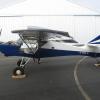
Over heating on Rotax 670
Started by
959,
28 posts in this topic
Create an account or sign in to comment
You need to be a member in order to leave a comment

Started by
959,
You need to be a member in order to leave a comment